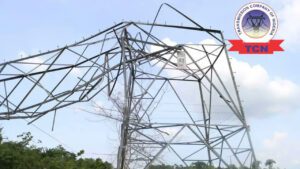
Projected borrowings: Rationalising the ratio of service to revenue
Keeping Nigeria’s debt profile within the purview of economic sustainability is one question that has continued to put observers on their toes. The perusal of the prevailing realities with critical juxtaposition of contending facts have left conundrums with calls for caution. This has particularly taken the phase of critical observations with recent records showing about 96 percent of the revenue of the Country now goes into debt servicing. As debt accumulation keeps rising with resort to borrowings by the Government, outcry over fear of the Country being held in a mist of entanglements have not ceased to come forth recently.
The reverberation of such concerns have received stronger vociferation with continuous resort to borrowings. Following the combined approval of N16.39 trillion for the 2022 Appropriation Bill by the Federal Executive Council (FEC), and the Senate, last month, the Federal Government has declared its intention to borrow additional loans to finance the N16.39 trillion proposed 2022 budget deficits. The deficits of N6.258 trillion of the proposed budget as disclosed by the Federal Government will be financed by new borrowings of N5.012 trillion (of which domestic – N2.506 trillion and foreign – N2.506 trillion); drawdowns on Project-tied Multilateral/Bilateral loans – N1.156 trillion; and Privatization Proceeds of N90.73 billion. The development has been a ground further deepening the resonance of concern over the prospects of the economy in the face of burdens of debt servicing and the strains of shrinking revenue.
PricewaterhouseCoopers projected recently that Nigeria’s unemployment rate may rise to 30 per cent by the last quarter (Q4) of the year amid slow economic growth. The consulting firm, in its September economic alert publication, estimated that unemployment could reach 28 per cent in Q3 from 27 per cent in Q 2 2020. Analysts at PwC led by the Partner and Chief Economist, Dr Andrew Nevin, noted that an estimated real Gross Domestic Product of about N280,000 was required to absorb a single employed person from Q2 2020 to Q 4 2020 due to the economic effects of COVID- 19. He said the estimates were reached based on an assumption that the GDP would shrink by 5.4 per cent. According to analysts, the labour force can grow to over 80 million while the number of employed persons will shrink by 2.14 million by Q 4 2020. A National Bureau of Statistics report had put Nigeria’s unemployment rate for Q2 2020 at 27 per cent, four percentage points higher than the 23 per cent reported in Q3 2018. According to the survey, the underemployment rate was 29 per cent, which was higher than the 20 per cent recorded in Q3 2018. When combined, the NBS said 52 per cent of the labour force was either without jobs or working below their potential (underemployment). According to PwC, some of the factors responsible for the rise in the unemployment and underemployment rates include the low level of industrialisation in the country, slow economic growth, low employability and quality of the labour force. It added that slow implementation of the national labour policy, as well as lack of coordinating labour policies at the subnational level, were other factors.
At the 2021 Chartered Institute of Bankers’ (CIBN’s) Fellowship Investiture, in Lagos, over the weekend, a partner at PricewaterhouseCoopers (PwC), Taiwo Oyedele, warned that the Country’s rising debt service obligations, if not curtailed, could lead into a debt trap, noting that the Country’s public debt rose by 21 per cent in five years. In his presentation on the theme: “Nigeria’s rising debt profile: Issues and implications for sustainable economic development,” Oyedele was quoted: “Our debt profile has risen 21 percent over the past five years and this is somewhere around 156 per cent increase. If you add it up to today it would have increased further. This is just as at end of last year. In this same period our GDP has just increased by an average of 0.15 per cent per annum, our revenue has only expanded by five percent in this same period resulting in our debt service cost ratio to revenue getting close to 100 per cent. This is where we need to start getting concerned. Nigeria is a poor country although with the potential to be rich and there are two different things. I hold the view that the level of borrowing is not inevitable because our debt is growing faster than GDP. Debt service fee is growing faster than revenue which means that if we do not reverse the trend, we will enter what we call the debt trap which means the point of no return.”
It is glaring that the enlargement of Nigeria’s budget from N4.5trillion in 2015 to over N10.8trillion in 2021 and the proposed N16.39trillion 2022 budget, has come with the elaborate resort to borrowing to cater for the deficits. While the National Bureau of Statistics pegs Nigeria’s debt as at March 2021, to N33.1trillion ($87.24 billion), it is glaring that fresh borrowings not captured in the report have taken course between the said period and now. In July, the Senate had approved a total of $6.18billion (N2.3 trillion) External Loan request by President Muhammadu Buhari to fund the 2021 budget deficit. The approval had generated harsh reactions over the fear of the strains debt servicing would pose to the Country’s economy. The heightening of the concern took toll when in August it was disclosed that about 91 per cent of the Country’s revenue went into debt servicing in the first half (H1) of 2021. Recently in September, it was also disclosed that in five years the Country has spent no less than $1.79bn on servicing debts owed to the World Bank and the Exim Bank of China.
Reactions over the rising debt profile has continued to evoke responses from the Government to justify why borrowing was inevitable for the President Buhari-led government. The Minister of Finance, Budget and National Planning, Zainab Ahmed had recently in her justification discourse during an interview session with Bloomberg TV, again blamed Nigeria’s high debt service to revenue ratio on the Country’s large expenditure base. Mentioning that a large proportion of Nigeria’s budget goes into payroll, she was quoted: “Our debt service to overall revenue is high because we have a very large expenditure base. We have a large proportion of our budget dedicated to payroll, and Mr President had decided from the beginning of his administration that we were not going to disengage staff. So, you have to pay salaries, you have to pay pensions. And also, we have to fund the other arms of government, which are the judiciary and the legislature.”
The continuous resort to borrowings without corrective interventions will only result to mounting of debt profile which remains a beach of threat to the Country’s posterity. It is thus, pertinent that the Government bring into bear the reality of the prevailing situation, while giving emphasis to prognostic parameters of impact assessment of the burdens of debts with the peculiarities of the Nigerian economy. Hence, while borrowings have benefits, poor administration of same could form the basis for economic woes. While the prevailing situation may seem fairly manageable to the Government, it has become important for the Government not to be so loose till situations become intolerable before giving priority to the significance of posterity and the parameters of prognosis for foresight on what threats lie ahead with accumulation of debt shrouded with poor management syndrome forming incongruous circles against purposeful end. Giving consideration to the sustainability of the burden of debt servicing has thus become of necessity to the Government to determine the rationality of further borrowings as intended or otherwise. This is pertinent bearing in mind the strains of entanglements which pose impacts that deeply transcend economic to socio-political ravages unhealthy for broad national development.



